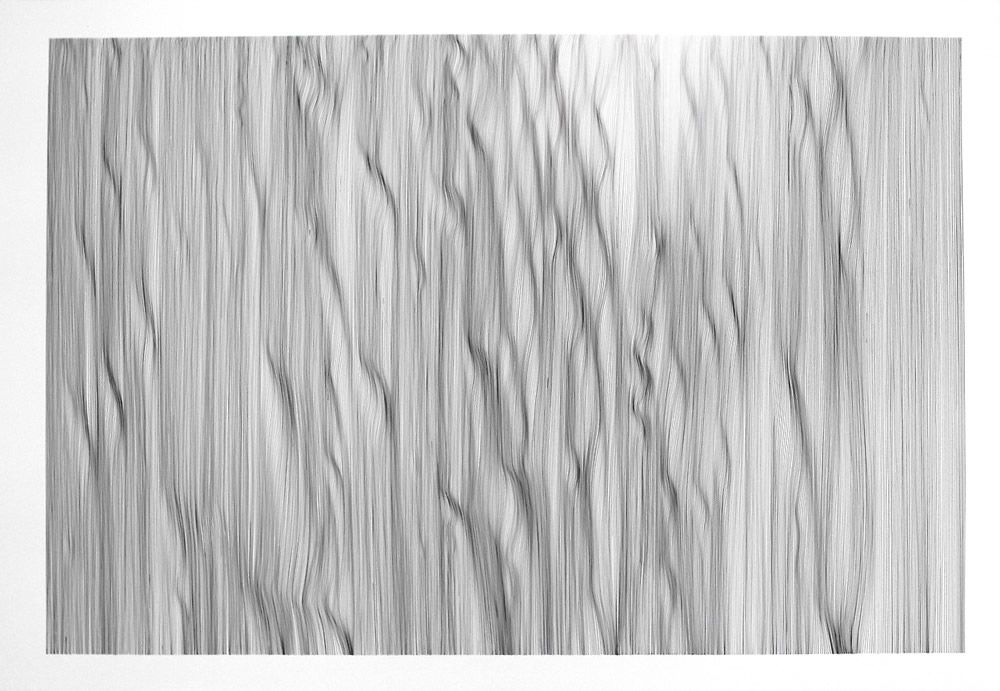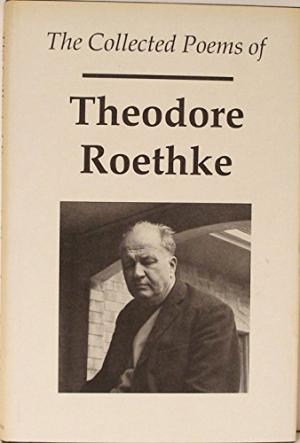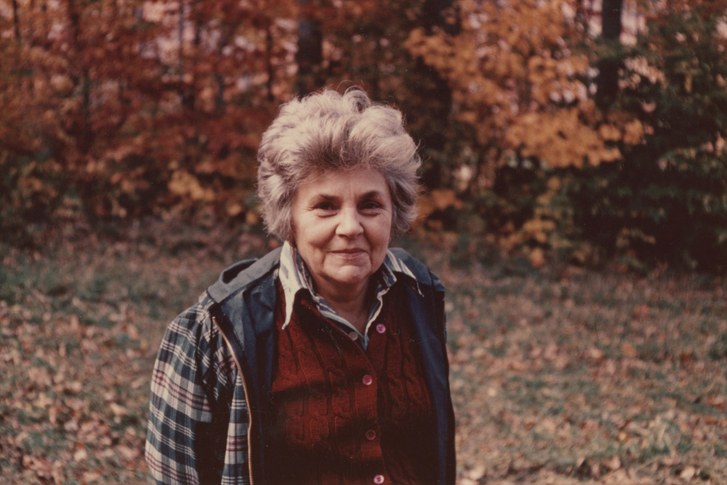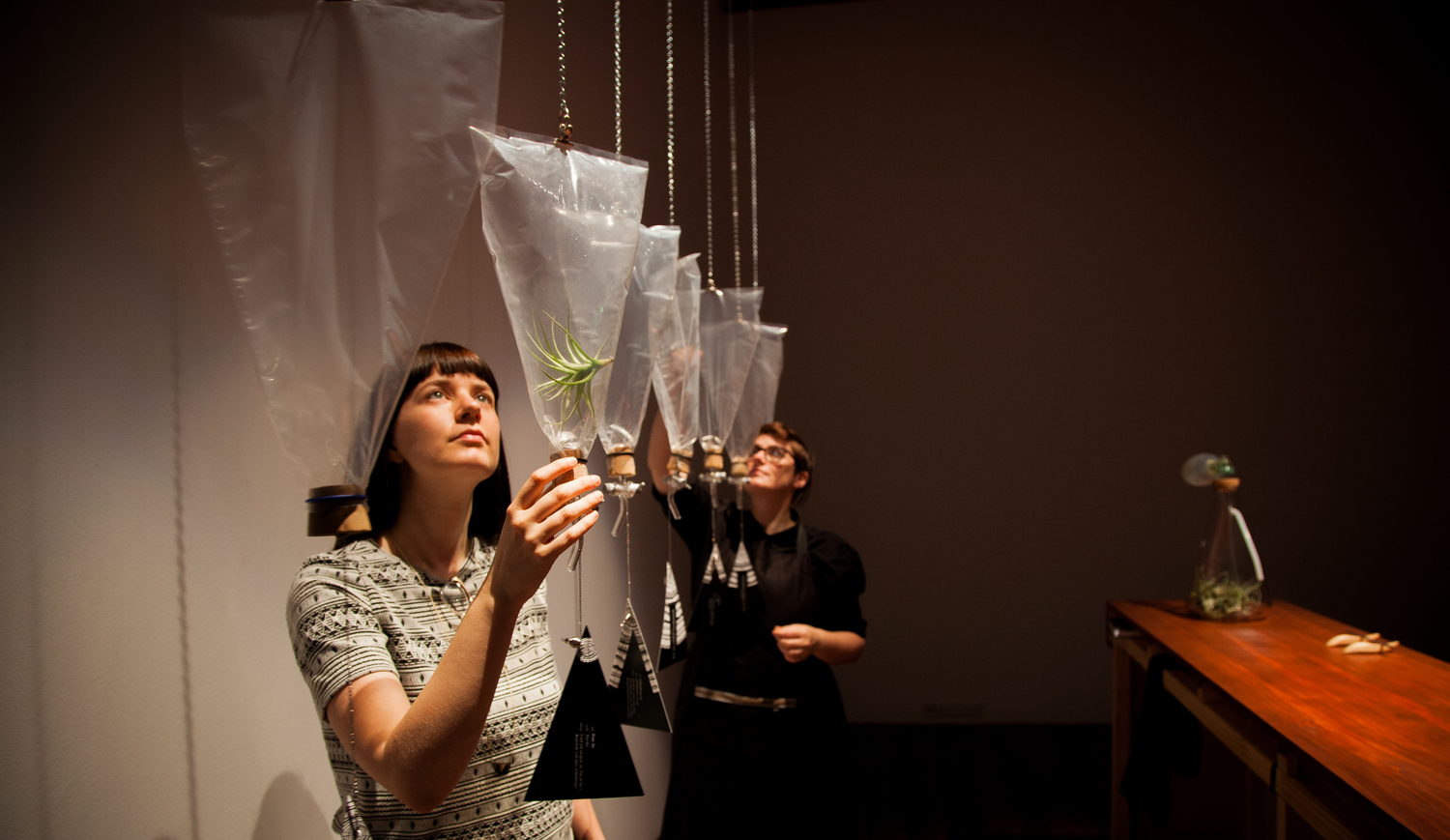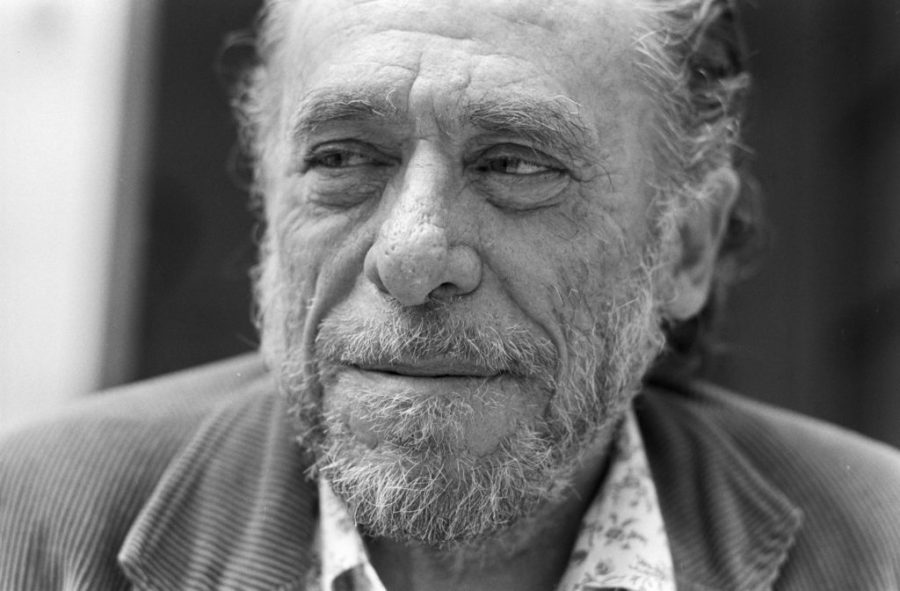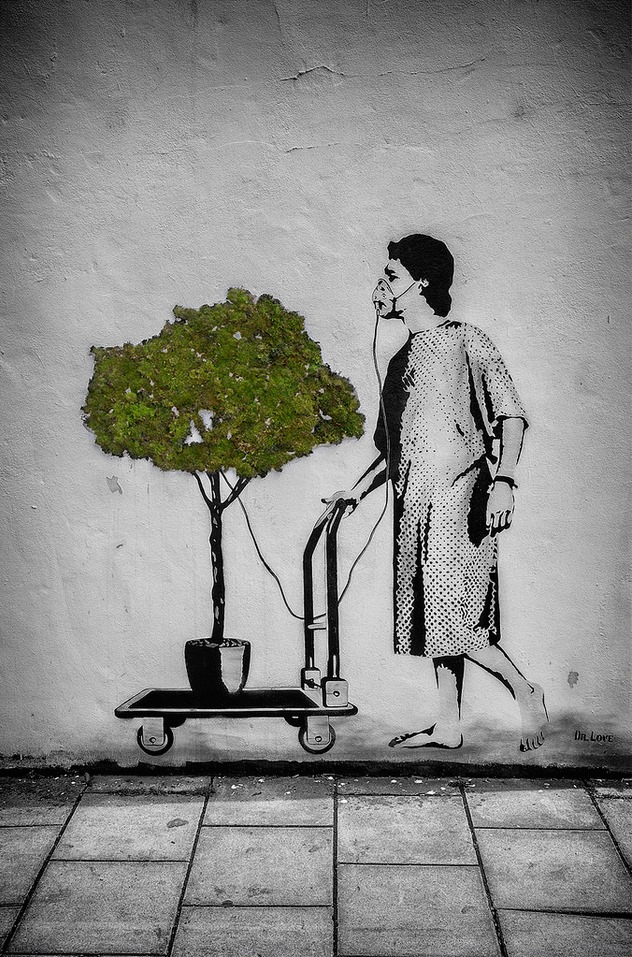Ah, to be a cat! In her collections of essays „On Cats“, Doris Lessing evokes the sensation of feeling alive, in a state of „delicate vibration“. A state us human adults yearn for continually and arrive at only momentarily, in creating or repairing something, in letting ourselves and others be, move and breathe; in blazes of beauty and, of course, love. Read More
Category: Breath in Literature & Art
“each line one breath”
In „each line one breath“, visual artist John Franzen uses his body and his breathing to draw lines. Each line is drawn on an exhale. The act of drawing, mechanical and organic at the same time, mimics the act of breathing. Just as each breath is subject to a multitude of psychophysical factors, so is each drawn line. “The fascination in this work is how the breath directly influences the materialization of the line, and thereby the whole image.”
Here is a video of a live drawing where John Franzen talks about “each line one breath”: Read More
“So take the lively air”
“So take the lively air” is a line from the poem “The Waking” by Theodore Roethke (1908-1963), one of my favourite poets. In his life and work he searched for a truth that was rooted in the mysteries of the relationship with the natural world, the realm of God and the unconscious, inner self. Roethke himself described this search as „a hunt, a drive toward God; an effort to break through the barrier of rational experience.“ It comes as no surprise then that breathing features in many of his poems.
The Waking
I wake to sleep, and take my waking slow.
I feel my fate in what I cannot fear.
I learn by going where I have to go. Read More
“Beneath that loved and celebrated breast”
I’d like to share a poem that not only features breathing but is entirely about breathing. It’s by the great American poet Elizabeth Bishop (1911-1979).
IV/O Breath
Beneath that loved and celebrated breast,
silent, bored really blindly veined,
grieves, maybe lives and lets
live, passes bets,
something moving but invisibly,
and with what clamor why restrained
I cannot fathom even a ripple.
(See the thin flying of nine black hairs
four around one five the other nipple,
flying almost intolerably on your own breath.)
Equivocal, but what we have in common’s bound to be there,
whatever we must own equivalents for,
something that maybe I could bargain with
and make a separate peace beneath
within if never with.
Source: Elizabeth Bishop, from “Four Poems”, Complete Poems, Chatto & Windus 1991
from Elizabeth Bishop
Different Kinds of Air, A Plant’s Diary
In her art work Different Kinds of Air, A Plant’s Diary (2004), Emily Parsons-Lord re-creates air from distinct moments in Earth’s history — from the clean, fresh-tasting air of the Carboniferous period to the soda-water air of the Great Dying to the heavy, toxic air of the future we’re creating. On her website she writes about her project: “300-350 million years ago oxygen levels were nearly double what they are today, supporting mega flora and fauna. 252.5 million years ago, the Earth experienced the greatest extinction event with 93-97% of species on land dying out and a simultaneous spike in carbon dioxide levels. The history of the atmosphere on Earth is inexorably linked to the history of life.” Read More
“have we come to this”
When I was in Tel Aviv last year; I went to Steimatzky’s bookstore at the port where, in a random assortment of English language books, I came across Come on in, a volume of poetry by Charles Bukowski. Already the title made me titter and on reading the poems I just laughed and laughed. How does Charles Bukowski manage to be so timeless refreshing, I wonder. Irreverence? Anyway, in the book I came across a poem that features breathing:
have we come to this
Lord, boys,
it‘s been a long time since we
sang a happy tune from
deep in the lungs.
somehow we‘ve allowed them
to shut off our air, our water, our
electricity, our joy. Read More
Breathing to go
This graffitti in New York is a find of Gio McClusky. I gave it the title “breathing to go”.
Source:https://www.facebook.com/Gio.Mccluskey
“When breath becomes air”
Maria Popova (for Brainpickings) has written a beautiful introduction to Paul Kalanithi‘s book When Breath Becomes Air.
When Breath Becomes Air: A Young Neurosurgeon Examines the Meaning of Life as He Faces His Death
“When you come to one of the many moments in life where you must give an account of yourself, provide a ledger of what you have been, and done, and meant to the world…”
All life is lived in the shadow of its own finitude, of which we are always aware — an awareness we systematically blunt through the daily distraction of living. But when this finitude is made acutely imminent, one suddenly collides with awareness so acute that it leaves no choice but to fill the shadow with as much light as a human being can generate — the sort of inner illumination we call meaning: the meaning of life. Read More
“… I can hear her breathing.”
“Another world is not only possible, she is on her way. On a quiet day, I can hear her breathing.”
Source: Arundhati Roy, War Talk, South End Publishers, April 2003
“…the air between us”
In a letter to Merce Cunningham, John Cage writes:
“i would like to measure my breath in relation to the air between us.”
Source: The Selected Letters of John Cage, Wesleyan 2016


